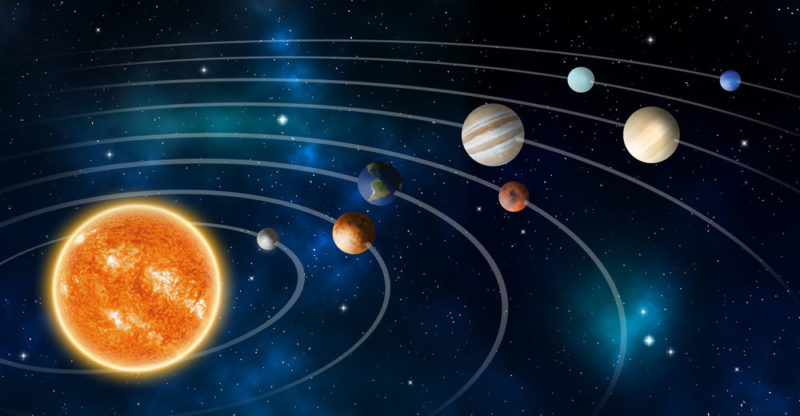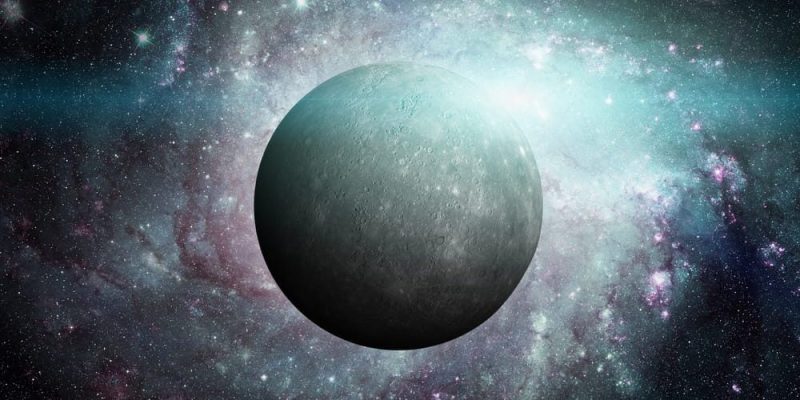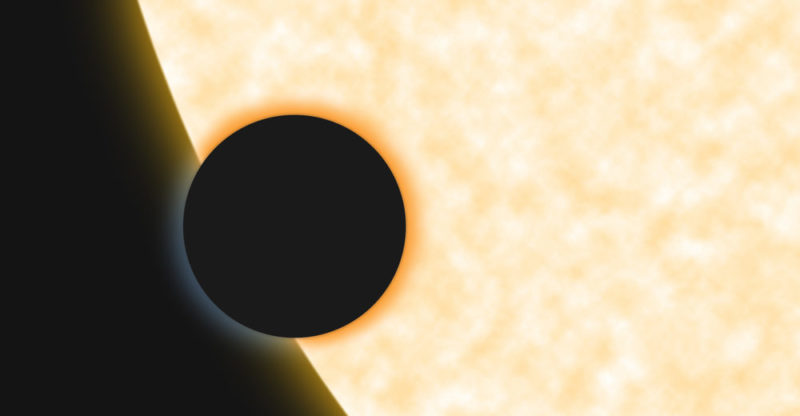We explain what Mercury is when it was discovered and what its dimensions are like. In addition, its characteristics and the mercurian phases.
What is Mercury?
Mercury is called the first planet in the Solar System from its proximity to the Sun and the smallest of all, located in a small orbit around it.
This planet is part of the inner or terrestrial planets, along with Venus, Earth, and Mars, and is completely devoid of satellites.
It is a rocky planet about which little was known until the visit of the Mariner 10 probe, which visited it three times between 1974 and 1975 and obtained telescopic and fluoroscopic images.
Mercury became the smallest planet in the Solar System after Pluto was reclassified as a dwarf planet or planetoid.
It receives its name from the god of the Greco-Roman tradition Mercury (Hermes, for the Greeks), the messenger of the gods and in charge of carrying the souls of the deceased to the entrance of the underworld.
Discovery of Mercury
The existence of Mercury has been known since ancient times. The first recorded mentions date from the Sumerian culture, from the third millennium BC, as well as the Babylonian culture, which baptized him as Nabu or Nebu, the heavenly messenger in their own mythology.
The ancient Greeks called it Apollo when it was observable during the morning and Hermes when it was during sunset until Pythagoras himself proposed that it was the same object.
However, the name Hermes, in its Latin version of Mercury, ended up imposing itself historically.
Mercury Dimensions

Mercury has a diameter of just 4879 kilometers at the equator and an area of 7.5 x 107 km2, which is the smallest dimension of the inner Solar System, just slightly larger than the Earth's Moon.
Its mass is 0.055 Earths (about 3.302 x 1023 Kg) and its density is 5.43 gm / cm3: the second densest planet after Earth.
Mercury location
Mercury is located in the orbit closest to the Sun in the Solar System, only about 58 million kilometers (almost a third of the 149.5 million of our planet).
It can be detected with the naked eye, without the need for a telescope or binoculars, just after sunset along the horizon, or at dawn, but never at night.
Orbital characteristics of Mercury

The orbit of Mercury is small, 88 Earth days, and an inclination of 7 ° with respect to the plane of the elliptical. This orbit is, however, very peculiar, since it is almost circular and the distance of the planet from the Sun varies.
On the other hand, its rotation is slow, to the point that in the past it was thought that it always showed the same face to the Sun, as the Moon does to the Earth. But today it is known that it rotates 3 times on its axis during every 2 orbits around the Sun, which generates very extreme temperatures on both sides.
In addition, Mercury travels about 50 km / s faster than the rest of the known planets and has a curious phenomenon of double sunrise: the Sun appears, sets again, and then rises again to continue its journey.
Climate of Mercury

The Mercurian climate is extreme on both sides: the face exposed to the Sun reaches temperatures of around 427 to 430 ° C, while its hidden face drops to -173 ° C.
Its atmosphere is extremely thin (that is why meteorites can easily penetrate it) and is mainly composed of oxygen, sodium, helium, hydrogen, and potassium since the high temperatures cause the atoms to escape into space.
Magnetosphere of Mercury
Mercury has a magnetosphere whose origin is unknown, although it has a metal core similar to that of the Earth. This magnetic atmosphere was evidenced by studying the behavior of the solar wind against the planet.
Geology of Mercury

The surface of Mercury is rocky, similar to that of the Moon, with abundant meteorite craters, which shows periods of much meteoric action (4000 years ago more or less).
It also has extensive plains and deep depressions, such as the Caloris and Rachmaninoff craters, 1,500 and 306 kilometers deep respectively.
Its structure is made up of three layers: a semi-molten metal core with a radius of about 2 km, a 600 km thick mantle, and then a 200 km thick crust, in which they have been detected, despite the intense temperatures. recorded, ice deposits of unknown origin.
Mercurian phases
Viewed from Earth, Mercury has phases, just like the Moon. Every 116 days on average the planet reaches its lower conjunction, that is, its 'new' phase, and gradually advances to its higher conjunction or 'full' phase.
At the extremes of this cycle, the planet begins to be visible from Earth , because in the interval it becomes much more difficult to perceive.
Mercury Transit

The passage of Mercury between the Sun and the Earth is called a transit and occurs when the three stars align perfectly, which takes place about 13 times during the century, at intervals of 3, 7, 10, and 13 years, because the planet is on another plane than Earth.
Space probes that visited Mercury
It is not easy to approach Mercury, given its proximity to the Sun and its lack of a braking atmosphere, so there are not many occasions that it has been closely studied.
The Mariner 10 (1974-1975), MESSENGER (2011) and BepiColombo (projected for 2024) space probes are space exploration projects that have provided us with images and data regarding Mercury.
The above content published at Collaborative Research Group is for informational and educational purposes only and has been developed by referring to reliable sources and recommendations from technology experts. We do not have any contact with official entities nor do we intend to replace the information that they emit.
Abubakr Conner brings a diverse skill set to our team, and covers everything from analysis to the culture of food and drink. He Believes: "Education is the most powerful weapon that exists to change the world." .
Leave a reply
Your email address will not be published. Required fields are marked *Recent post

Sport: What Is It, Types, Risks, Features, Characteristics and Examples

Dogs: Emergence, Features, Characteristics, Feeding and Breeds

Story: Definition, Elements, Structure, Features and Characteristics

